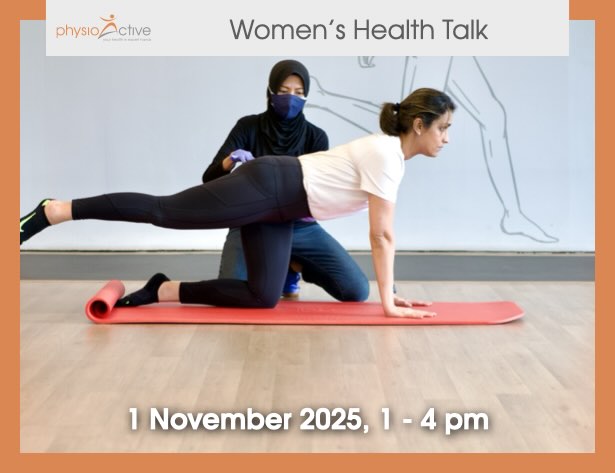Introducing Ergonomics
Physioactive strives to provide you with the ideal treatment and awareness to live a good quality, pain-free life.
Have a look at our “Ergonomics 101” series to better understand the ideal environment for your everyday lifestyle.
If you need further assistance with pain injury management or ergonomics, visit our website for details.
If you want to make an appointment, you can do so online or send us a whatsapp
Common Conditions
What does a construction builder, an auditor, a housewife and a dentist have in common? Although all of them may be from different walks of life, they all happened to be at Physioactive physiotherapy clinic on one rainy Monday of the 5th of May. Different as their lifestyles maybe, they had all come in with severe musculoskeletal pains on different parts of their bodies. They have neglected their pains for as long as they could but today the unbearable pain left them no choice but to come for physiotherapy.
It seems highly unlikely that all of these pains have the same cause – yet, this is the case indeed!
Introducing a concept unknown to many; its impact can be so big on health that it’s worth taking some time to understand it – Ergonomics.
Why Ergonomics
Have you ever wondered why a handle is designed with a certain groove or curve? Or why a computer keyboard might have a special shape?
The answer is: most of these designs improve convenience and comfort for interaction between humans and their environment. The beauty of these designs come from the application of ergonomics – the science that involves the study of the human body including design for improved health, better experience, and better productivity.
Ergonomics applies anytime, anywhere for everyone.
Lets quickly cover some ergonomic basics that apply to everyone. This includes:
- Proper posture
- Managing forces
- Excessive repetitive motion
Basic Tips
When it comes to sitting, standing, or walking – proper bone and joint alignment is key so straighten up that back, keeping ears, shoulders, and hips in a straight line. Before you sit, remember to squat by hinging at the hip – make sure you keep everything aligned and then sit. Maintaining that posture through your day and any work will reduce fatigue, eliminate strains, decrease stress on joints and ligaments, and have you feeling great!
So here’s the thing: a distraction for proper posture can potentially be the different forces. There are lifting and carrying forces, grip forces, push and pull forces, and plain gravity. Let’s help you out with this: to avoid injury don’t lift, pull or push too much – let your posture guide you and if need be, get help, or use other tools to aid. Also, move that body, if you stand up a lot for work – sit. Alternatively, if you’ve been sitting – stand up. Every change is an opportunity to think and realign your posture.
Doing the same task over and over and over – yes you get the point – its repetitive motion – this may cause carpal tunnel syndrome, joint problems, poor circulations, and more. Fortunately, these injuries are easy to avoid. Firstly arrange your work area to fit you and support your posture. Secondly, stretch. Simple stretches like these once every 30-60 minutes can make a world of a difference and prevent injuries
Summary
The purpose of ergonomics is to improve comfort and convenience between humans and their environment. It applies to everyone.
So be mindful of posture, reduce forces, and take breaks to stretch and realign yourself. Do all that and you are on your way to be more efficient, more productive, and healthier.
View our next video. we will cover tips to use smartphones and tablets ergonomically. In the meantime, we wish you a healthy and pain-free day. If you are in pain, please book an appointment on our website or give us a call.



